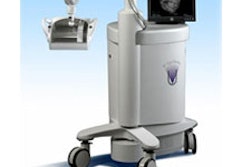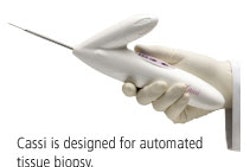CHICAGO - Customized training of a probabilistic system used in mammography decision support yields no significant difference in the system's diagnostic performance, according to research presented Thursday at the 2005 RSNA meeting.
"Interobserver variability in BI-RADS terminology use did not affect performance of a (computer-aided detection) system based on BI-RADS descriptors," said presenting author Dr. Charles Kahn from the Medical College of Wisconsin (MCW) in Milwaukee.
A MCW research team analyzed the effect of training "personalized" decision models on its probabilistic mammography CAD system to determine the effect of interobserver variability in use of the Breast Imaging Reporting and Data System (BI-RADS).
The institution's CAD system utilizes a Bayesian network model to predict the probability of malignancy based on 30 mammography findings encoded by radiologists using BI-RADS descriptors and demographic risk factors, including age, hormone replacement therapy, and family history of breast cancer. The initial model contained probabilities from the literature and expert opinion, Kahn said.
Eight experienced radiologists used BI-RADS descriptors to encode findings from all diagnostic and screening mammography examinations performed in a 58-month period at a single institution, he said. Any radiologist who read fewer than 1,000 exams was prospectively excluded.
To evaluate the effect of interobserver variability, the researchers trained and tested the system using two methods, a “combined” model and “personalized” models. The combined model was trained using exams read by all the radiologists, while the personalized models were trained and tested separately for each radiologist, according to the researchers. The results were then aggregated for analysis, using tenfold cross-validation and receiver operating characteristic (ROC) analysis.
The six radiologists included in the study interpreted a total of 48,215 exams, ranging from 1,157 to 21,917 exams per radiologist. The radiologists interpreted a median of 4,241 exams.
Before training, the system's area under the ROC curve was 0.923. For the combined model, the area under the curve was 0.975 for the combined model and 0.978 for the personalized models.
"Both the personalized and the combined models perform significantly better than the untrained model, but we did not find any significant difference between the personalized and customized models," Kahn said.
By Erik L. Ridley
AuntMinnie.com staff writer
December 1, 2005
Related Reading
CAD falls short of double reading for breast cancer detection, October 25, 2005
Sharp rise in U.K. breast cancer survival rates, October 10, 2005
Breast cancer drug move gives hope to U.K. patients, October 6, 2005
Jury is still out on U.K. CAD utilization, October 5, 2005
Computer-aided detection system helps diagnose breast cancer, September 6, 2005
Copyright © 2005 AuntMinnie.com




















